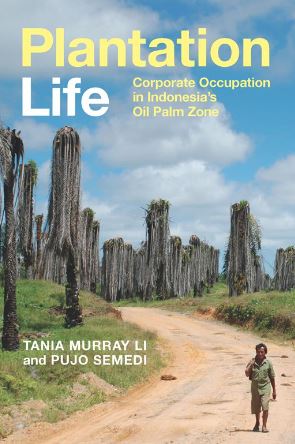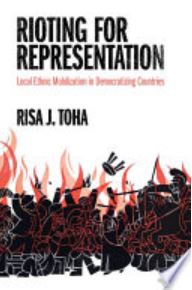In Fifty Years in the Karen Revolution in Burma, Saw Ralph and Naw Sheera‘s detailed description of their day-to-day lives makes a significant contribution to Southeast Asian Studies scholarship, writes Sinmyung Park.
_______________________________________________

Fifty Years in the Karen revolution in Burma: The soldier and the teacher. Saw Ralph and Naw Sheera. Cornell University Press. 2020.
It is widely known that Myanmar has suffered from a series of ethnic disputes that persist across its territory. The lesser-known facts are historical accounts of ethnic armed organisations (EAOs) that have lived through the long years of conflict. Among them, the armed struggle between the Karen National Organisation (KNU) and the Myanmar military (Tatmadaw) is worthy to note, given that the KNU remains today the most influential and one of the largest EAOs in Myanmar. In this particular vein, Fifty Years in the Karen Revolution in Burma provides its readers a rare opportunity to navigate the critical moments of Myanmar’s modern history from the perspectives of insiders who held leadership positions at the KNU and its affiliated organisations. Considering how details of the people who have lived through the Karen conflict remain scant, the book itself is an invaluable first-hand data source for the readers and researchers interested in Myanmar’s civil war.
The book consists of personal narratives of a married Karen couple. Saw Ralph, the husband, joined the Karen National Liberation Army–the military wing of the KNU–at the age of eighteen and rose to the rank of Brigadier General. Naw Sheera, the wife, was a schoolteacher and later joined the Karen Women’s Organisation (KWO) and actively educated the Karen women about their rights. Their accounts of resilience and survival help the readers to stay immersed within the everyday lives of the Karens, unfolding the many faces of the Karen resistance and its implication for ethnic interactions of the past and the present of Myanmar.
Through chapters on their early lives, stages of the revolution, marriage, and their settlement in Australia, the book navigates how Saw Ralph and Naw Sheera’s personal lives were shaped by the social, political, and cultural realities of the civil war. The couple had gone through indeed difficult and turbulent times. To name a few, they endured the loss of their first child and witnessed many deaths of their comrades and enemies. Most of all, the long years they had been apart from each other must have been the most challenging part. Saw Ralph recalls in a later chapter that he had been away for so long and wasted so much time apart. It was his sense of loyalty as a KNLA officer that obligated him to stay on the battlefield as long as he could. This devotion was to set an example for other soldiers who also wanted to visit their families. Saw Ralph’s profound commitment to the Karen resistance earned him three medals but at the expense of the precious times that could have been spent with his family. Of his five children, he was only at home for the birth of his last child.
On the other hand, Naw Sheera recalls that, when men went away to the battles, “women had to do everything: grow crops, look after children, cook and clean” (p. 144). While raising four children, Naw Sheera also served as an organizer at the KWO. She visited different townships and villages to coordinate the KWO and its structure in seven Karen districts. In each village, she gathered women, encouraged them to join the KWO, and educated them about “women’s rights to work and do the same jobs as men, such as office work” (p. 145). Her work as a teacher enabled her to communicate with them effectively. Naw Sheera eventually became the general secretary of the KWO in 1987 and was re-elected in 1989 and 1993.
As this book recreates the modern history of Myanmar by describing the world through the couple’s day-to-day lives, it is essential to note that the authors make it clear throughout all chapters that “it was because of the army that everyone was suffering…they didn’t really care for the general population” (p. 90). This point is particularly more pertinent to the context of today’s post-coup Myanmar, where the Burmans–the majority ethnic group of Myanmar–are starting to realize that the Tatmadaw is now coming for everyone. The majority of Burmans regret their collective failure to speak out in the past when the Tatmadaw had inflicted acts of cruelty upon other minority ethnic groups, including the Karen. That is to say, all populations of Myanmar have realized keenly the necessity of communal resistance to the oppressive regime that turned muzzles toward the unarmed people on the streets. Within this social atmosphere of national repentance and reconciliation, Saw Ralph and Naw Sheera’s life stories could serve as a counternarrative that decolonizes the once-rampant practices of othering, which often vilified and dehumanized ethnic minorities in Myanmar. This book will resound with many who are under the tyrannical rule of the Tatmadaw, since the tragedies that the authors had to endure have suddenly become their own struggles.
If this compelling book has one flaw, it would be the disproportionate volume of narratives between the husband and the wife. Saw Ralph’s narrative consists of 98 pages, whereas Naw Sheera’s is hardly 50 pages. In the Editor’s Preface, Stephanie Olinga-Shannon, the editor of the book, discusses several practical challenges when putting together the couple’s narratives. One of the difficulties was that Naw Sheera didn’t speak English, so a grandchild of one of her friends translated for her. Such technical difficulty was perhaps the reason for the inequitable distribution of pages. However, I believe the readers would have appreciated the book even more if the two narratives had been allocated in an even manner.
With its rarity and detailed description, Saw Ralph and Naw Sheera’s narratives are a significant contribution to the Southeast Asian Studies scholarship. I hope that the editor will consider translating the book into Burmese so that a wider audience could benefit from its lessons.
Note: This review gives the views of the author, and not the position of the Southeast Asia Centre, or of the London School of Economics.
Banner Image Credit: Photo by Christian Holzinger on Unsplash





